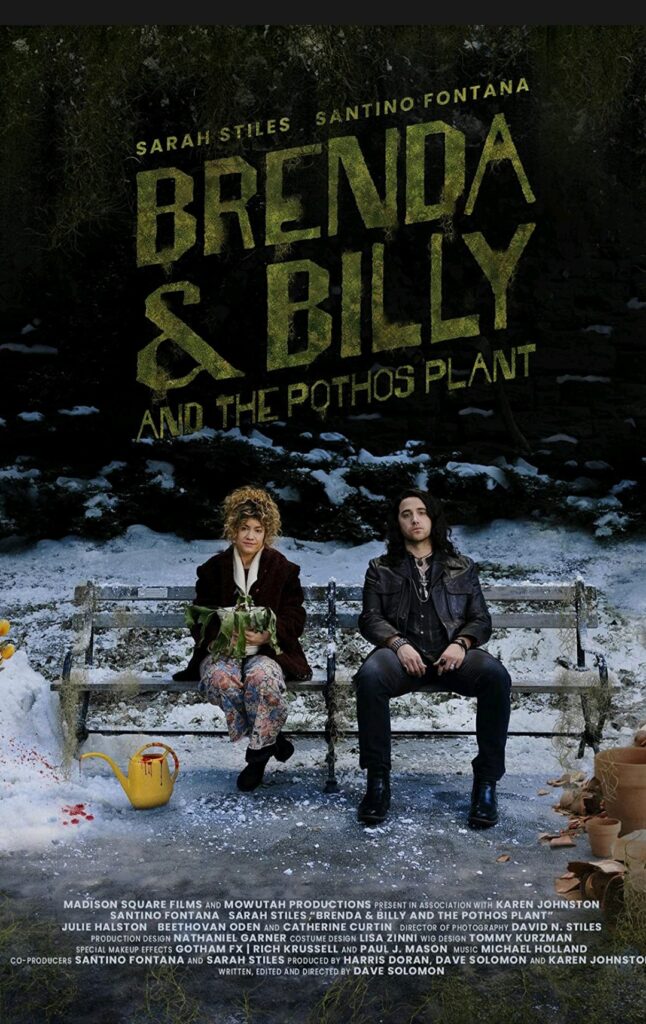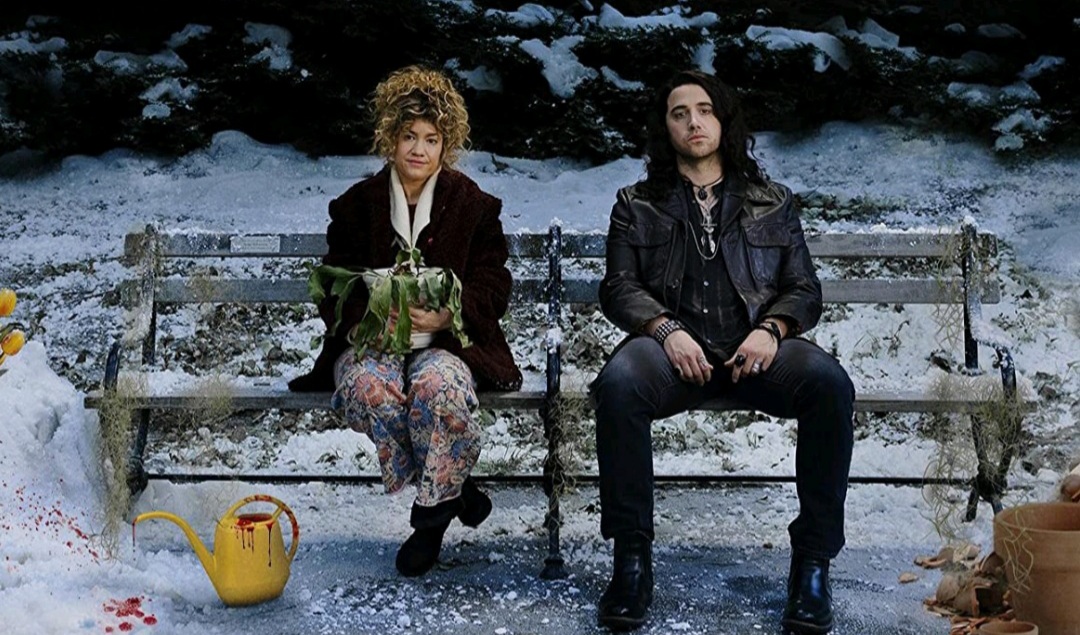Brenda and Billy and the Pothos Plant is a delightfully absurd black comedy short film directed by Dave Solomon. The film debuts at Tribeca Festival on Friday, June 9th. The story is playful and ridiculous, and is complemented by solid cinematography, set design and lighting—especially given the film’s tight location.
The film opens with shots of an open river, a vacant park, empty streets: it is New York City in February 2022, straight after two years of Covid lockdowns and restrictions. Though the film doesn’t specifically address this subject, we are immediately introduced to the great indoors: its tight settings and strained relationships. The film succeeds in its effective use of minimal and interior locations, as the inventive set design makes up for any loss of any maneuverability. The absurd inciting incident involves an argument between plant-obsessed botanist Brenda (Sarah Stiles) and her mother (Catherine Curtin). Brenda’s brother Billy (Santino Fontana), a tortured and vampiric magician, arrives from Las Vegas, via Brooklyn, to help to decide what to do. What ensues is desperate debilitation of fortunes as the siblings participate in a hapless and hilarious tug-of-war.

The film ultimately rests on the performances of Stiles and Fontana. Both actors, the former a Tony Award nominee and the latter a Tony Award winner, bring superb comedic timing and delivery to their respective roles. In one sense, they are siblings in name only. Brenda is extroverted, expressive and high-pitched; Billy is introverted, reserved and low-pitched. The contrast is startling. Fontana, in particular, steals the show as a long-haired, black-leathered, Nicolas Cage-like metal magician. He is as cool as a cucumber with a doctorate in cryogenics, while also appearing totally unhinged at times. His eyes are vacant and facial expressions sunken; his mannerisms—calculated and floaty—guide the camera through the doorways. Stiles’ performance drives the insanity further and deeper. Brenda speaks with such a relentless pace, as if trapped in a Howard Hawks film. When Billy, on occasion, sinks deep into contemplation, she bursts forward with energy—seemingly unable to control her impulsiveness.
The film makes good use of flashbacks, as well as using plants and lighting effectively, to create distinctive interior spaces. The flashbacks are a creative way of showing us through the events that would have taken up a large amount of dialogue and screen time in explanation. Regarding interior spaces, both main characters are often positioned in frames surrounded by plants and pictures, with blue light invading the corners of some shots. David N. Stiles excels in this area and achieves well-constructed images in tight rooms and hallways.
Brenda’s character, though intentionally unstable, does leave certain questions unanswered. She switches between remorse, excitement, guilt and terror at an impossibly fast rate, some changes are funny but others are just jarring. The interludes including other characters, the policeman Carl (Beethovan Oden) and Mamma Lemmons (Julie Halston), while necessary, are not executed as well as the rest of the film. The comedic elements are more strained, as perhaps the effortlessness of the performances by Stiles and Fontana masks some of the misfires in the writing in parts of the film.
Brenda and Billy and the Pothos Plant is a very well executed black comedy that thrives in its absurdity and chaos. The action is exciting and surprising: keeping you on your toes throughout the course of each scene. The central performances elevate the film, as Stiles and Fontana masterfully navigate the bizarre world of the film. The film teeters on the edge of farce, but refrains from deteriorating into complete illogicality. There is genuine tact in the creation of a funny situation within which characters, with all their eccentricities, can thrive: Brenda and Billy and the Pothos Plant does that. . . and more.


